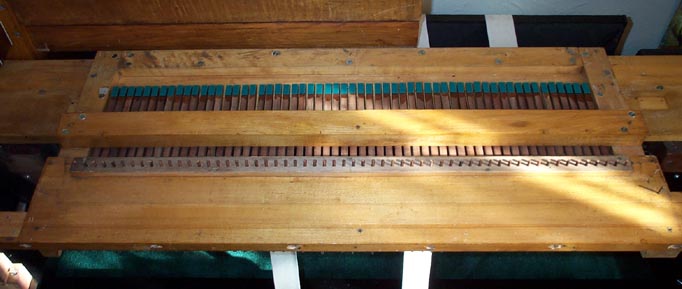Chapter 10 - The Keybed
The first item "above the deck" is the massive keybed/shelf, made from 5/4" maple. The levers or rocker arms that connect the keys to the pneumatic action pallet box rotate around screws hung upside down under it. These screws are used later to adjust the touch to the pneumatic valves. A soft, thick felt strip above their hinge point just serves to keep the levers from rattling up and down against the rocking point. it does not define the fulcrum point. There are springs inside the pallet box, but they are very light. The main steel springs which set the keyboard "touch" are mounted to the underside of the front of the keybed, and bear on the forward ends of the levers. At rest, the levers strop against a pad under the keybed. This was a thin stick, with thin red felt on its under surface, just like the pallet heel rest pads used throughout the organ. This pad, with levers pressed against it, sets the upper limit of the key's movement, and thus the level of the keyboard, just as the closed pallets set the key height in an American reed organ. The pallet sticks from the keys to the levers are rather long. They ride not in a deep hole in the keybed, but rather in a large hole almost all the way through the board. Only the bottom end of this hole is a close fit to the 9/64" sticks. Another rail. with similar close fitting holes, is screwed to the top of the front plank. Thus the sticks are guided top and bottom.
Everything that could be reached had been lubed with some thick goop which had gone hard and sticky. So all the parts were washed with PineSol, and set to dry in the sun.
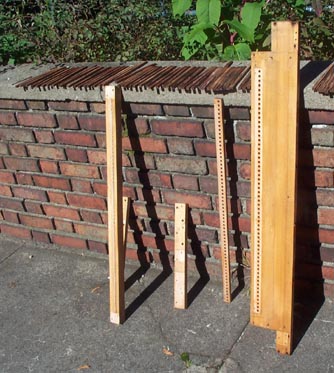

New thin green action cloth is glued to each end of the levers. It is glued on, with the edges of the levers touching, and chopped apart, just like recovering pallets.
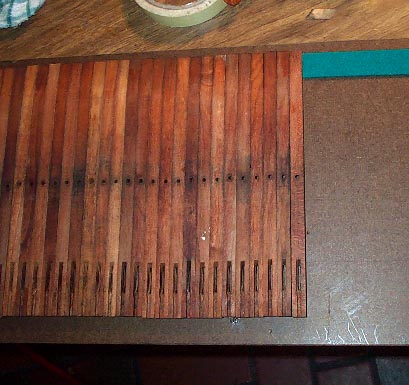
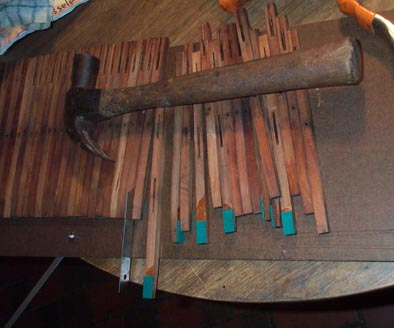
The levers are reinstalled, using new screws and thin fiber washers. McMaster-Carr #96100A110 - "Thick Black Hard Fiber Washers, 2 Screw Size, 3/32" ID, 1/4" OD, 1/64" Thick" were a good match for the originals, which had become oil soaked and softened.
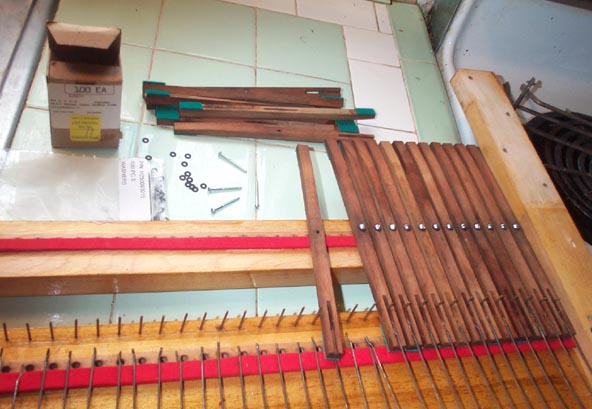
Here is the keybed assembled on the shelf, with the pallet sticks in place. Later the levers were lined up by straightening the guide pins. The final adjustment of the rocker screws will be made after the keyboard and the pallet box are installed.
